.
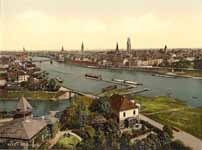
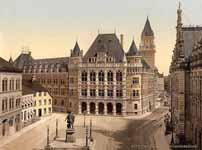
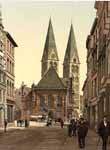
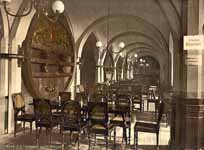
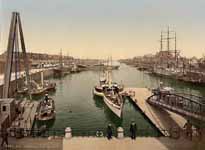
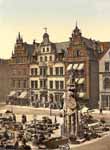
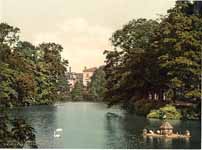
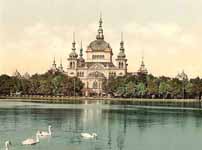
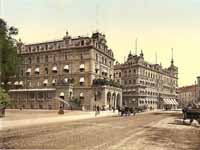
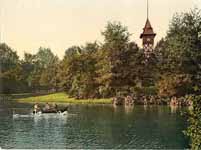
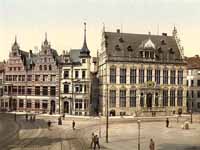
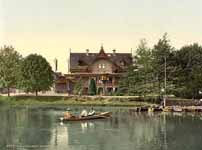
Bremen
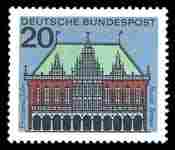
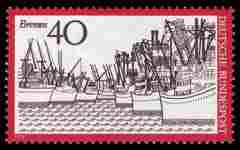
The City Municipality of Bremen (German: Stadtgemeinde Bremen, pronounced [ˈbʁeːmən]) is a Hanseatic city in northwestern Germany. A commercial and industrial city with a major port on the river Weser, Bremen is part of the Bremen-Oldenburg metropolitan area (2.4 million people). Bremen is the second most populous city in North Germany and tenth in Germany.
Bremen is some 60 km (37 mi) south from the Weser mouth on the North Sea. With Bremerhaven right on the mouth the two comprise the state of Bremen (official name: Freie Hansestadt Bremen - Free Hanseatic City of Bremen).
History
The marshes and moraines near Bremen have been settled since about 12000 BC. Burial places and settlements in Bremen-Mahndorf and Bremen-Osterholz date back to the 7th century AD. In 150 AD the geographer Ptolemy refers to Fabiranum or Phabiranum, known today as Bremen. At that time the Chauci lived in the area now called north-western Germany or Lower Saxony. By the end of the 3rd century, they had merged with the Saxons. During the Saxon Wars (772–804) the Saxons, led by Widukind, fought against the West Germanic Franks, the founders of the Carolingian Empire, and lost the war.
Charlemagne, the King of the Franks, made a new law, the Lex Saxonum. This law stated that Saxons were not allowed to worship Odin (the god of the Saxons), but rather that they had to convert to Christianity on pain of death. This period was called the Christianisation. In 787 Willehad of Bremen was the first Bishop of Bremen. In 848 the diocese of Hamburg merged with the diocese of Bremen, and in the following centuries the bishops of Bremen were the driving force behind the Christianisation of north Germany. In 888 Archbishop Rimbert, managed to get Kaiser Arnulf of Carinthia, the Carolingian King of East Francia, to grant Bremen the right to hold its own markets, to mint its own coins and make its own customs laws.
The first stone city walls were built in 1032. Around this time trade with Norway, England and the northern Netherlands began to grow, thus increasing the importance of the city.
Germania, in the early 2nd century (Harper and Brothers, 1849)
In 1186 the Bremian Prince-Archbishop Hartwig of Uthlede and his bailiff in Bremen confirmed — without generally waiving the prince-archiepiscopal overlordship over the city — the Gelnhausen Privilege, by which Frederick I Barbarossa granted the city considerable privileges. The city was recognised as a political entity with its own laws. Property within the municipal boundaries could not be subjected to feudal overlordship; this also applied to serfs who acquired property, if they managed to live in the city for a year and a day, after which they were to be regarded as free persons. Property was to be freely inherited without feudal claims for reversion to its original owner. This privilege laid the foundation for Bremen's later status of imperial immediacy (Free Imperial City).
In fact, however, Bremen did not have complete independence from the Prince-Archbishops, in that there was no freedom of religion, and burghers were still forced to pay taxes to the Prince-Archbishops. Bremen played a double role; it participated in the Diets of the neighbouring Prince-Archbishopric of Bremen as part of the Bremian Estates and paid its share of taxes, at least when it had previously consented to this levy. Since the city was the major taxpayer, its consent was generally sought. In this way the city wielded fiscal and political power within the Prince-Archbishopric, while not allowing the Prince-Archbishopric to rule in the city against its consent. In 1260 Bremen joined the Hanseatic League.
View from the Bremen Cathedral in the direction of the Stephani-Bridge
Advent of territorial power
In 1350, the number of inhabitants reached 20,000. Around this time the Hansekogge (cog ship) became a unique product of Bremen.
In 1362, representatives of Bremen rendered homage to Albert II, Prince-Archbishop of Bremen in Langwedel. In return Albert confirmed the city's privileges and brokered a peace between the city and Gerard III, Count of Hoya, who since 1358 had held some burghers of Bremen in captivity. The city had to bail them out. In 1365 an extra tax, levied to finance the ransom, caused an uprising amongst the burghers and artisans which was put down by the city council after much bloodshed.
In 1366, Albert II tried to take advantage of the dispute between Bremen's council and the guilds, whose members had expelled some city councillors from the city. When these councillors appealed to Albert II for help, many artisans and burghers regarded this as treason against the city. This appeal to the princes would only provoke them to abolish autonomy of the city.
The fortified city maintained its own guards, not allowing prince-archiepiscopal soldiers to enter it. The city reserved an extra very narrow gate, the so-called Bishop's Needle (Latin: Acus episcopi, first mentioned in 1274), for all clergy including the Prince-Archbishop. The narrowness of the gate made it technically impossible to enter accompanied by knights.
Nevertheless, on the night of 29 May 1366, Albert's troops helped by some burghers invaded the city. After this the city had to render him homage again, the Bremen Roland, symbol of the city's autonomy, was demolished and a new city council was appointed. In return the new council granted Albert a credit amounting to the enormous sum of 20,000 Bremian Marks.
But city councillors of the previous council, who had fled to the County of Oldenburg gained the support of the Counts and recaptured the city on June 27, 1366. The members of the intermediate council were regarded as traitors and beheaded, and the city de facto regained its autonomy. Thereupon, the city of Bremen, which had for a long time held an autonomous status, acted almost in complete independence of the Prince-Archbishop. Albert failed to reduce the city of Bremen a second time, since he was always short of money and without the support of his family, the Welfs, who fought the Lüneburg War of Succession (1370–88).
By the end of the 1360s Bremen had granted credits to Albert II, to finance his lavish lifestyle, and gained in return the fortress of Vörde and the dues levied in the bailiwick belonging to it as a pawn for the credits. In 1369 Bremen again lent money to Albert II against the collateral of his mint and his right to mint coins, which was from then on run by the city council. In 1377 Bremen bought — from Frederick, Duke of Brunswick-Lüneburg — many of the prince-archiepiscopal castles, which Albert had pledged as security for a loan to Frederick's predecessor. Thus Bremen gained a powerful position in the Prince-Archbishopric (ecclesiastical principality), pushing its actual ruler aside.
In 1380 knights of the von Mandelsloh family and others Verdian and Bremian robber barons plundered the burghers of Bremen and the people of the entire Prince-Archbishopric of Bremen. In 1381 the city's troops successfully ended this brigandage and captured the castle of Bederkesa and the bailiwick belonging to it, which it was able to hold until November 1654, when after the Second Bremian War Bremen had to cede Bederkesa and Lehe (a part of present-day Bremerhaven) to Bremen-Verden. In 1386 the city of Bremen made vassals of the noble families, which held the estates of Altluneburg (a part of present-day Schiffdorf) and Elmlohe.
Bremen and the Reformation
When the Protestant Reformation swept through Northern Germany, St Peter's cathedral belonged to the cathedral immunity district (German: Domfreiheit), an extraterritorial enclave of the neighbouring Prince-Archbishopric of Bremen. In 1532, the cathedral chapter which was still Catholic at that time closed St Peter's after a mob consisting of Bremen's burghers had forcefully interrupted a Catholic mass and prompted a pastor to hold a Lutheran service.
In 1547, the chapter, which had in the mean time become predominantly Lutheran, appointed the Dutch Albert Rizaeus, called Hardenberg, as the first Cathedral pastor of Protestant affiliation. Rizaeus turned out to be a partisan of the Zwinglian understanding of the Lord's Supper, which was rejected by the then Lutheran majority of burghers, the city council, and chapter. So in 1561 — after heated disputes — Rizaeus was dismissed and banned from the city and the cathedral again closed its doors.
However, as a consequence of that controversy the majority of Bremen's burghers and city council adopted Calvinism by the 1590s, while the chapter, which was at the same time the body of secular government in the neighbouring Prince-Archbishopric, clung to Lutheranism. This antagonism between a Calvinistic majority and a Lutheran minority, though it had a powerful position in its immunity district (mediatised as part of the city in 1803), remained dominant until in 1873 the Calvinist and Lutheran congregations of Bremen were reconciled and founded a united administrative umbrella Bremian Protestant Church, which still exists today, comprising the bulk of Bremen's burghers.
At the beginning of the 17th century, Bremen continued to play its double role, wielding fiscal and political power within the Prince-Archbishopric, but not allowing the Prince-Archbishopric to rule in the city without its consent.
Thirty Years War
Flag of Bremen
Soon after the beginning of the Thirty Years' War Bremen declared its neutrality, as did most of the territories in the Lower Saxon Circle. John Frederick, Lutheran Administrator of the Prince-Archbishopric of Bremen, desperately tried to keep his Prince-Archbishopric out of the war, with the complete agreement of the Estates and the city of Bremen. When in 1623 the Republic of the Seven United Netherlands, which was fighting in the Eighty Years' War for its independence against Habsburg's Spanish and imperial forces, requested its Calvinist co-religionist Bremen to join them, the city refused, but started to reinforce its fortifications.
In 1623 the territories comprising the Lower Saxon Circle decided to recruit an army in order to maintain an armed neutrality, since troops of the Catholic League were already operating in the neighbouring Lower Rhenish-Westphalian Circle and dangerously close to their region. The concomitant effects of the war, debasement of the currency and rising prices, had already caused inflation which was also felt in Bremen.
In 1623 the Republic of the Seven United Netherlands, diplomatically supported by King James I of England, the brother-in-law of Christian IV of Denmark, started a new anti-Habsburg campaign. Thus the troops of the Catholic League were otherwise occupied and Bremen seemed relieved. But soon after this the imperial troops under Albrecht von Wallenstein headed north in an attempt to destroy the fading Hanseatic League, in order to reduce the Hanseatic cities of Bremen, Hamburg and the Lübeck and to establish a Baltic trade monopoly, to be run by some imperial favourites including Spaniards and Poles. The idea was to win Sweden's and Denmark's support, both of which had for a long time sought the destruction of the Hanseatic League.
In May 1625 Christian IV of Denmark, Duke of Holstein was elected — in the latter of his functions — by the Lower Saxon Circle's member territories commander-in-chief of the Lower Saxon troops. In the same year Christian IV joined the Anglo-Dutch military coalition. Christian IV ordered his troops to capture all the important traffic hubs in the Prince-Archbishopric and commenced the Battle of Lutter am Barenberge, on 27 August 1626, where he was defeated by the Leaguist troops under Johan 't Serclaes, Count of Tilly. Christian IV and his surviving troops fled to the Prince-Archbishopric and established their headquarters in Stade.
In 1627 Christian IV withdrew from the Prince-Archbishopric, in order to oppose Wallenstein's invasion of his Duchy of Holstein. Tilly then invaded the Prince-Archbishopric and captured its southern part. Bremen shut its city gates and entrenched itself behind its improved fortifications. In 1628, Tilly turned on the city, and Bremen paid him a ransom of 10,000 rixdollars in order to spare it a siege. The city remained unoccupied throughout the war.
The takeover by the Catholic League enabled Ferdinand II, Holy Roman Emperor, to implement the Edict of Restitution, decreed March 6, 1629, within the Prince-Archbishopric of Bremen including the city of Bremen. In September 1629 Francis William of Wartenberg, appointed by Ferdinand II as chairman of the imperial restitution commission for the Lower Saxon Circle, in carrying out the provisions of the Edict of Restitution, ordered the Bremian Chapter, seated in Bremen, to render an account of all the capitular and prince-archiepiscopal estates (not to be confused with the Estates). The Chapter refused, arguing first that the order had not been authorised and later that due to disputes with Bremen's city council, they could not freely travel to render an account, let alone do the necessary research on the estates. The anti-Catholic attitudes of Bremen's burghers and council was to make it completely impossible to prepare the restitution of estates from the Lutheran Chapter to the Roman Catholic Church. Even Lutheran capitulars were uneasy in Calvinistic Bremen.
Bremen's city council ordered that the capitular and prince-archiepiscopal estates within the boundaries of the unoccupied city were not to be restituted to the Catholic Church. The council argued that the city had long been Protestant, but the restitution commission replied that the city was de jure a part of the Prince-Archbishopric, so Protestantism had illegitimately taken over Catholic-owned estates. The city council replied that under these circumstances it would rather separate from the Holy Roman Empire and join the quasi-independent Republic of the Seven Netherlands.[3] The city was neither to be conquered nor to be successfully besieged due to its new fortifications and its access to the North Sea.
In October 1631 an army, newly recruited by John Frederick, started to reconquer the Prince-Archbishopric — helped by forces from Sweden and the city of Bremen. John Frederick returned to office, only to implement the supremacy of Sweden, insisting that it retain supreme command until the end of the war. With the impending enforcement of the military Major Power of Sweden over the Prince-Archbishopric of Bremen, which was under negotiation at the Treaty of Westphalia, the city of Bremen feared it would fall under Swedish rule too. Therefore the city appealed for an imperial confirmation of its status of imperial immediacy from 1186 (Gelnhausen Privilege). In 1646 Ferdinand III, Holy Roman Emperor, granted the requested confirmation (Diploma of Linz) to the Free Imperial City.
Swedish reaction
Nevertheless, Sweden, represented by its imperial fief Bremen-Verden, which comprised the secularised prince-bishoprics of Bremen and Verden, did not accept the imperial immediacy of the city of Bremen. Swedish Bremen-Verden tried to remediatise the Free Imperial City of Bremen (i.e. to make it switch its allegiance to Sweden). With this in view, Swedish Bremen-Verden twice waged war on Bremen. In 1381 the city of Bremen had imposed de facto rule in an area around Bederkesa and west of it as far as the lower branch of the Weser near Bremerlehe (a part of present-day Bremerhaven). Early in 1653, Bremen-Verden's Swedish troops captured Bremerlehe by force. In February 1654 the city of Bremen managed to get Ferdinand III, Holy Roman Emperor, to grant it a seat and the vote in the Holy Roman Empire's Diet, thus accepting the city's status as Free Imperial City of Bremen.
Ferdinand III demanded that Christina of Sweden, Duchess regnant of Bremen-Verden, compensate the city of Bremen for the damages caused and restitute Bremerlehe. When in March 1654 the city of Bremen started to recruit soldiers in the area of Bederkesa, in order to prepare for further arbitrary acts, Swedish Bremen-Verden enacted the First Bremian War (March to July 1654), arguing that it was acting in self-defence. The Free Imperial City of Bremen had meanwhile urged Ferdinand III to support it, who in July 1654 asked Charles X Gustav of Sweden, Christina's successor as Duke of Bremen-Verden, to cease the conflict, which resulted in the Recess of Stade (November 1654). This treaty left the main issue, the acceptance of the city of Bremen's imperial immediacy, unresolved. But the city agreed to pay tribute and levy taxes in favour of Swedish Bremen-Verden and to cede its possessions around Bederkesa and Bremerlehe, which was why it was later called Lehe.
In December 1660 the city council of Bremen rendered homage as Free Imperial City of Bremen to Leopold I, Holy Roman Emperor. In 1663 the city gained a seat and a vote in the Imperial Diet, despite sharp protest from Swedish Bremen-Verden. In March 1664 the Swedish Diet came out in favour of waging war on the Free Imperial City of Bremen. Right after Leopold I, who was busy with wars against the Ottoman Empire, had enfeoffed the minor King Charles XI of Sweden with Bremen-Verden, while the neighbouring Brunswick and Lunenburg-Celle was occupied by succession quarrels and France not opposed, Sweden started the Second Bremian War (1665–66) from its Bremen-Verden fief.
The Swedes under Carl Gustaf Wrangel laid siege to the city of Bremen. The siege brought Brandenburg-Prussia, Brunswick and Lunenburg-Celle, Denmark, Leopold I and the Netherlands onto the scene, who were all in favour of the city, with Brandenburgian, Cellean, Danish, and Dutch troops at Bremen-Verden's borders ready to invade. So on 15 November 1666 Sweden had to sign the Treaty of Habenhausen, obliging it to destroy the fortresses built close to Bremen and banning Bremen from sending its representative to the Diet of the Lower Saxon Circle. From then on no further Swedish attempts were made to capture the city.
In 1700 Bremen introduced — like all Protestant territories of imperial immediacy — the Improved Calendar, as it was called by Protestants, in order not to mention the name of Pope Gregory XIII. So Sunday, 18 February of Old Style was followed by Monday, 1 March New Style.
Map of Central Europe from 919–1125, by William R. Shepherd
1600 Bremen
1748 coin of Bremen
1859 Marketplace of Bremen
1900 Bremen
1911 Ports of Bremen
19th century
The harbour of Vegesack became part of the city of Bremen in 1803. In 1811, Napoleon invaded Bremen and integrated it as the capital of the Département de Bouches-du-Weser (Department of the Mouths of the Weser) into the French State. In 1813, the French — as they retreated — withdrew from Bremen. Johann Smidt, Bremen's representative at the Congress of Vienna, was successful in achieving the non-mediatisation of Bremen, Hamburg and the Lübeck by which they were not incorporated into neighbouring monarchies, but became sovereign republics.
Population History
1350: 20,000
1810: 35,800
1830: 43,700
1850: 55,100
1880: 111,900
1900: 161,200
1925: 295,000
1969: 607,185
1995: 549,357
1998: 550,000
2001: 540,950
2005: 545,983
2006: 546,900
2009: 547,685[4]
The first German steamship was manufactured in 1817 in the shipyard of Johann Lange.
In 1827, Bremen, under Johann Smidt, its mayor at that time, purchased land from the Kingdom of Hanover, to establish the city of Bremerhaven (Port of Bremen) as an outpost of Bremen because of the increased silting up of the river Weser.
Brauerei Beck & Co KG, a brewery, was founded in 1837 and remains in operation today. The shipping company The North German Lloyd (NDL) was founded in 1857. Lloyd was a byword for commercial shipping and is now a part of Hapag-Lloyd. In 1872, the Bremen Cotton Exchange was created.
20th century
A Soviet (Council) Republic of Bremen existed from November 1918 to February 1919 in the aftermath of World War I before it was overthrown by Gerstenberg Freikorps.
Henrich Focke, Georg Wulf and Werner Naumann founded Focke-Wulf Flugzeugbau AG in Bremen in 1923; the aircraft construction company as of 2010 forms part of Airbus[citation needed], a manufacturer of civil and military aircraft. Borgward, an automobile manufacturer, was founded in 1929, and is today part of Daimler AG.
The villages of Grohn, Schönebeck, Aumund, Hammersbeck, Fähr, Lobbendorf, Blumenthal, Farge and Rekum became part of the city of Bremen in 1939. The Bremen-Vegesack concentration camp operated during World War II.
Following the bombing of Bremen in World War II, the British 3rd Infantry Division under General Whistler captured Bremen in late April 1945.[5]
Bremen's mayor Wilhelm Kaisen (SPD) travelled 1946 to the U.S. to reestablish Bremen's statehood, as Bremen had traditionally been a city-state, in order to prevent its incorporation into the state of Lower Saxony in the British zone of occupation. In 1947 the city became an enclave, part of the American occupation zone surrounded by the British zone.
In 1947, Martin Mende founded Nordmende, a manufacturer of entertainment electronics. The company existed until 1987. In 1958, OHB-System, a manufacturer of medium-sized spaceflight satellites, was founded. The university of Bremen was founded in 1971.
Demographics
As of 2009, Bremen had a population of 547,700 of whom about 137,000 (~25%) were of non-German origin/ethnicity.
Number of minorities (1st and 2nd generation) in Bremen by country of origin per 31 December 2006.[6]
Rank Ancestry Number
1 Turkey 50,000
2 Poland 12,000
3 Yugoslavia 10,000
4 Russia 4,500
5 Italy 3,000
6 Iran 3,000
7 Ghana 2,500
8 Ukraine 2,500
9 China 2,500
10 Lebanon 2,000
Politics
The Stadtbürgerschaft (municipal assembly) is made up of 68 of the 83 legislators of the state legislature, the Bremische Bürgerschaft, who reside in the city of Bremen. The legislature is elected by the citizens of Bremen every four years.
One of the two mayors (Bürgermeister) is elected President of the Senate (Präsident des Senats) and serves as head of the city and the state. The current President is Jens Böhrnsen.
Last state election
Main article: Bremen state election, 2011
| Party | Votes | % | +/– | Seats | +/– | % | |
|---|---|---|---|---|---|---|---|
| Social Democratic Party (SPD) | 38.6 | +1.9 | 36 | +4 | |||
| Alliance '90/The Greens | 22.5 | +5.7 | 21 | +7 | |||
| Christian Democratic Union (CDU) | 20.4 | -5.1 | 20 | -3 | |||
| The Left | 5.6 | -2.8 | 5 | -2 | |||
| Citizens in Rage (BIW) | 3.7 | +2.9 | 1 | 0 | |||
| Free Democratic Party (FDP) | 2.4 | -3.8 | 0 | -5 | |||
| Pirate Party Germany (PIRATEN) | 1.9 | +1.9 | 0 | 0 | |||
| National Democratic Party (NPD) | 1.6 | -1.1 | 0 | 0 | |||
| Others | 3.4 | +2.7 | 0 | 0 | |||
| Totals | 100.0% | — | 83 | — | 100.0% | ||
These are the final results. [7]
Main sights
Roland
Many of the sights in Bremen are found in the Altstadt (Old Town), an oval area surrounded by the Weser River, on the southwest, and the Wallgraben, the former moats of the medieval city walls, on the northeast. The oldest part of the Altstadt is the southeast half, starting with the Marktplatz and ending at the Schnoor quarter.
The Marktplatz (Market square) is dominated by the opulent façade of the Town Hall of Bremen. The building was erected between 1405 and 1410 in Gothic style, but the façade was built two centuries later (1609–12) in Renaissance style. The Town Hall is the seat of the President of the Senate of Bremen. Today, it hosts a restaurant in original decor with gigantic wine barrels, the Ratskeller in Bremen, and the wine lists boasts more than 600 — exclusively German — wines. It is also home of the twelve oldest wines in the world, stored in their original barrels in the Apostel chamber. In July 2004, along with the Bremen Roland, the building was added to the list of UNESCO World Heritage Sites.
Two statues stand to the west side of the Town Hall: one is the statue Bremen Roland (1404) of the city's protector, Roland, with his view against the Cathedral and bearing Durendart, the "sword of justice" and a shield decorated with an imperial eagle. The other near the entrance to the Ratskeller is Gerhard Marcks' bronze sculpture (1953) Die Stadtmusikanten (Town Musicians) which portrays the donkey, dog, cat and rooster of the Grimm Brothers' fairy tale.
Other interesting buildings in the vicinity of the Marktplatz are the Schütting, a 16th-century Flemish-inspired guild hall, and the Stadtwaage, the former weigh house (built in 1588), with an ornate Renaissance façade. The façades and houses surrounding the market square were the first buildings in Bremen to be restored after World War II, by the citizens of Bremen themselves.
The impressive Cathedral St. Petri (13th century), to the east of the Marktplatz, with sculptures of Moses and David, Peter and Paul and Charlemagne.
The Liebfrauenkirche (Our Lady's Church) is the oldest church of the town (11th century). Its crypt features several impressive murals from the 14th century.
Off the south side of the Markplatz, the 110 m (120 yd) Böttcherstraße was transformed in 1923–1931 by the coffee magnate Ludwig Roselius, who commissioned local artists to convert the narrow street (in medieval time, the street of the barrel makers) into an inspired mixture of Gothic and Art Nouveau. It was considered "entartete Kunst" (degenerate art) by the Nazis. Today, the street is one of Bremen's most popular attractions.
At the end of Böttcherstraße, by the Weser bank, stands the Martinikirche (St Martin's Church), a Gothic brick church built in 1229, and rebuilt in 1960 after its destruction in World War II.[citation needed]
Tucked away between the Cathedral and the river is the Schnoor, a small, well-preserved area of crooked lanes, fishermen's and shipper's houses from the 17th and 18th centuries, now occupied by cafés, artisan shops and art galleries.
Schlachte, the medieval harbour of Bremen (the modern port is some kilometres downstream) and today a riverside boulevard with pubs and bars aligned on one side and the banks of Weser on the other.
More contemporary tourist attractions include:
Universum Science Center, a modern science museum
The Rhododendron-Park Bremen, a major collection of rhododendrons and azaleas, which also includes a botanical garden
Botanika, a nature museum within the Rhododendron-Park Bremen that attempts be to the same as the Universum, but for biology
Beck's Brewery, tours are available to the public which include beer tasting
The Kunsthalle Bremen, an art museum with paintings from the 19th and 20th century, maintained by the citizens of Bremen
Focke Museum, People of Bremen's Museum for Art and Cultural History
The Übersee Museum Bremen (Overseas (World) Museum) is a Natural History and Ethnographic museum near by the Central Station Bremen
The Kunstsammlungen Böttcherstraße, an art museum in expressionist architecture from Bernhard Hoetger with paintings from the 20th century from Paula Modersohn-Becker.
The Weserburg Museum für moderne Kunst ("Weserburg Modern Art Museum"), a modern art museum located in the middle of the Weser River.[8]
View from the Stephani-Bridge in the direction of the Cathedral
Schlachte
Baumwollbörse (Cotton exchange)
The Parkhotel in the Bürgerpark (central park)
Musical-Theater
Central Park Wallanlagen
The city hall (Rathaus)
Swineherd and pigs sculpture in Bremen
The Weser River in Bremen
A building on Böttcherstraße
Bremer Bank
Central Bremen and the Weser from St. Petri Dom
Airport Bremen
The Skyscraper Weser Tower was built 2007-2009 and designed by Helmut Jahn
Böttcherstraße
Schnoor
Beck & Co
Bremen-Arena
Structures
Mediumwave transmitter Bremen
Fallturm Bremen
Bremen-Walle Telecommunication Tower
The Freie Waldorfschule in Bremen-Sebaldsbrück was Germany's first school built to the Passivhaus low-energy building standard.[9]
The Fallturm (Drop Tower) of the University of Bremen
Economy
The Bremen site is the second development centre after Hamburg. It forms part of the production network of Airbus Deutschland GmbH and this is where equipping of the wing units for all widebody Airbus aircraft and the manufacture of small sheet metal parts takes place. Structural assembly, including that of metal landing flaps, is another focal point. Within the framework of Airbus A380 production, assembly of the landing flaps (high lift systems) is carried out here. The pre-final assembly of the fuselage section (excluding the cockpit) of the A400M military transport aircraft takes place before delivery on to Spain.[10]
More than 3,100 persons are employed at Bremen, the second largest Airbus site in Germany. As part of the Centre of Excellence - Wing/Pylon, Bremen is responsible for the design and manufacture of high-lift systems for the wings of Airbus aircraft. The entire process chain for the high-lift elements is established here, including the project office, technology engineering, flight physics, system engineering, structure development, verification tests, structural assembly, wing equipping and ultimate delivery to the final assembly line. In addition, Bremen manufactures sheet metal parts like clips and thrust crests for all Airbus aircraft as part of the Centre of Excellence — Fuselage and Cabin.[11]
In Bremen there is a plant of EADS Astrium and the headquarter of OHB-System, respectively the first and the third space companies of European Union.
There is also a Mercedes-Benz factory in Bremen, building the C, CLK, SL, SLK, and GLK series of cars.[12]
Beck & Co's headlining brew Beck's and St Pauli Girl beers are brewed in Bremen. In past centuries when Bremen's port was the "key to Europe", the city also had a large number of wine importers, but the number is down to a precious few. Apart from that there is another link between Bremen and wine: about 800 years ago, quality wines were produced here. The largest wine cellar in the world is located in Bremen (below the city's main square), which was once said to hold over 1 million bottles, but during WWII was raided by occupying forces.
A large number of food producing or trading companies are located in Bremen with their German or European headquarters: Anheuser–Busch InBev (Beck's Brewery), Kellogg's, Kraft Foods (Kraft, Jacobs Coffee, Milka Chocolate, Milram, Miràcoli), Frosta (frosted food), Nordsee (chain of sea fast food), Melitta Kaffee, Eduscho Kaffee, Azul Kaffee, Vitakraft (pet food for birds), Atlanta AG (Chiquita banana), chocolatier Hachez (fine chocolate and confiserie), feodora chocolatier.
Transport
Main train station Bremen
Map of the Bremen S-Bahn
Bremen has an international airport situated in the south of the city.
Bremer Straßenbahn AG (translates from German as Bremen Tramways Corporation), often abbreviated BSAG, is the public transport provider for Bremen, offering tramway and bus services.[13]
The Bremen S-Bahn covers the Bremen/Oldenburg Metropolitan Region, from Bremerhaven in the north to Twistringen in the south and from Oldenburg in the west. It has been in operation since 2010.[14] This network unified existing regional transport in Bremen as well as surrounding cities, including Bremerhaven, Delmenhorst, Twistringen, Nordenham, Oldenburg, and Verden an der Aller. The network lies completely within the area of the Bremen-Lower Saxony Transport Association, whose tariff structure applies.
Events
Every year since 1036, in the last two weeks of October, Bremen has hosted Freimarkt ("Free market"), one of the world's oldest and in Germany one of today's biggest continuously celebrated fairground festivals.
Bremen is host to one of the four big annual Techno parades, the Vision Parade.
Bremen is also host for the "Bremer 6 Tage Rennen" a bicycle race at the Bremen Arena.
Every year the city plays host to young musicians from across the world, playing in the International Youth Symphony Orchestra of Bremen (IYSOB).
On March 12, 1999, the rock band Kiss played a live show here. Before the show they were told by the fire marshall not to use any fireworks. During the show they used no fireworks, but at the end, they set off all of the fireworks at once. Because of this, they are now banned from playing in Bremen.
Bremen was host to the 2006 RoboCup competition.
Bremen was host to the 32nd Deutscher Evangelischer Kirchentag from 20 to 24 May 2009.
Bremen hosted the 50th International Mathematical Olympiad (IMO) from 10 to 22 July 2009.[15]
Sports
The Weserstadion (Football (soccer) stadium)
Bremen is home to the football team SV Werder Bremen which won the German Football Championship for the fourth time and the German Football Cup for the fifth time in 2004, making SV Werder Bremen just the fourth team in German football history to win the double; the club won the German Football Cup for the sixth time in 2009. Only Bayern Munich has won more titles. In the final match of the 2009–10 season, Werder Bremen competed with Bayern Munich but lost. The Weserstadion, the home stadium of the SV Werder Bremen, is currently under construction. After being finished, the stadium will be a pure football stadium, almost completely surrounded by solar cells. It will be one of the biggest buildings in Europe delivering alternative energies.
Education and Sciences
With 18000 students,[16] the University of Bremen is the largest university in Bremen, and is also home to the international Goethe-Institut and the Fallturm Bremen. Additionally, Bremen has a University of the Arts and the Bremen University of Applied Sciences. In 2001, the private Jacobs University Bremen was founded. All major German research foundations maintain institutes in Bremen, with a focus set on marine sciences: The Max Planck Society with the Max Planck Institute for Marine Microbiology, and the Gottfried Wilhelm Leibniz Scientific Community with the Center for Tropical Marine Ecology (zmt). The Bremerhaven based Alfred-Wegener-Institute of the Helmholtz Association closely cooperates with the aforementioned institutes, especially within the MARUM, a center for marine environmental sciences, affiliated to the University of Bremen. Furthermore, The Fraunhofer Society is present in Bremen with centers for applied material research IFAM and medical image computing MEVIS.
Miscellanea
In December 1949, Bremen hosted the lecture cycle Einblick in das, was ist by the philosopher Martin Heidegger, in which Heidegger introduced his concept of a "fourfold" of earth and sky, gods and mortals. This was also Heidegger's first public-speaking engagement following his removal from his Freiburg professorship by the Denazification authorities.
Bremen is connected with a fairy tale by the Brothers Grimm, the Town Musicians of Bremen, although they never actually reach Bremen in the tale.
The 1922 film Nosferatu, eine Symphonie des Grauens was set mostly in Bremen.
Notable people
Kersten Artus — journalist and politician
Heinrich Averbeck — physiotherapist
Adolf Bastian — polymath
Ben Becker and Meret Becker — actors
Henry Bohlen — American Civil War Union Brigadier General
Karl Carstens — politician
André Erkau — Film director and screenplay writer
Henrich Focke — aviation pioneer and co-founder of Focke-Wulf
Friedemann Friese — Designer of Power Grid and other board games.
Harald Genzmer — composer of contemporary classical music
Reinhard Hardegen — Member of Bremen Parliament and former U-boat commander of submarine U-123.
Klaus Kleinfeld — former chief executive officer (CEO) of Siemens AG
Johann Georg Kohl — travel writer, historian and geographer
Louis Krages — racing driver and businessman
Georg Kulenkampff — violinist
Hans-Joachim Kulenkampff — actor and TV host
Angelique Kerber - Professional Tennis Player
Murat Kurnaz — Guantanamo Bay prisoner for four years
James Last — composer and big band leader
Franz Adolf Eduard Lüderitz — merchant and colonist
Joachim Neander — hymn song writer
Charles Henry Nimitz (1826–1911) Born in Bremen. In 1852, built the Nimitz Hotel in Fredericksburg, Texas, which now houses the National Museum of the Pacific War. Grandfather of United States Fleet Admiral Chester Nimitz. Elected to the Texas Legislature 1890.
Juergen Nogai — Architectural Photographer & Filmmaker
Wilhelm Olbers — physician and astronomer
Henry Oldenburg - Secretary of the Royal Society
Hans Otte — composer
Ludwig Quidde — pacifist politician and Nobel Peace Prize laureate
Sven Regener — musician and writer
Gottfried Reinhold Treviranus — naturalist
Friedrich Gerhard Rohlfs — geographer, explorer, author and adventurer
Bert Trautmann — football goalkeeper
Jürgen Trittin — Green politician
Edward Voigt — U.S. Representative from Wisconsin
Wilhelm Wagenfeld — industrial designer of the 20th century
Kai Warner — pop musician
Frederick Charles Winkler — American Civil War Union Brigadier General
Hermann Uhde — Wagnerian baritone
Revolverheld — Rock Band
Ludwig Roselius — Businessman and patron of the arts
International relations
See also: List of twin towns and sister cities in Germany
Twin towns / Sister cities
Bremen is twinned with:
City Since Country
Gdańsk[17] 1976 Poland
Riga [18] 1985 Latvia
Dalian 1985 China
Rostock 1987 Germany1
Haifa 1988 Israel
Bratislava[19] 1989 Slovakia
Corinto 1989 Nicaragua
Lukavac 1994 Bosnia and Herzegovina
İzmir 1995 Turkey
Durban[20] South Africa
Pune India
Maracaibo Venezuela
Dudley[21] United Kingdom
^1 Then the German Democratic Republic
See also
List of mayors of Bremen
SV Werder Bremen
Hanseatic League
References
Bibliography
Tristam Carrington-Windo, Katrin M. Kohl (1998). A Dictionary of Contemporary Germany. Routledge (UK). p. page 64. ISBN 1-57958-114-5.
Claus Christian (2007): A photographic excursion through Bremen, Bremen-North, Bremerhaven, Fischerhude and Worpswede, ISBN 978-3-00-015451-5
Dannenberg, Hans-Eckhard and Heinz-Joachim Schulze (eds.) (1995-2008). Geschichte des Landes zwischen Elbe und Weser (3 vol., vol. 1 Vor- und Frühgeschichte (1995), vol. 2 Mittelalter (einschl. Kunstgeschichte) (1995), vol. 3 Neuzeit (2008), (Schriftenreihe des Landschaftsverbandes der ehem. Herzogtümer Bremen und Verden; vol. 7) ed.). Stade: Landschaftsverband der ehem. Herzogtümer Bremen und Verden. ISBN (vol. 1) ISBN 978-3-9801919-7-5, (vol. 2) ISBN 978-3-9801919-8-2, (vol. 3) ISBN 978-3-9801919-9-9.
Herbert Schwarzwälder (1995), Geschichte der Freien Hansestadt Bremen. Vol. I - V. Bremen: Edition Temmen, ISBN 3-86108-283-7
Notes
^ "Bevölkerungsstand und Bevölkerungsbewegung (monatlich)" (in German). Statistisches Landesamt Bremen. 30 November 2010.
^ The carsign HB with 1 letter and 4 digits is reserved for vehicle registration in Bremerhaven.
^ Dutch independence was finally confirmed by the Treaty of Westphalia in 1648.
^ "Bremen (Germany)". City Population. Retrieved 7 June 2011.
^ Sir John Smythe Bolo Whistler: The Life of General Sir Lashmer Whistler Frederick Muller Ltd 1967
^ http://www.statistik.bremen.de/sixcms/detail.php?gsid=bremen65.c.2044.de
^ "Ergebnisse der Bürgerschaftswahlen in Bremen".
^ Weserburg Museum für moderne Kunst
^ Passivhaus schools (German), Passivhaus Institute. Retrieved 2007-05-30.
^ "EADS in Germany". Eads.com.
^ "Airbus in Germany". Airbus.com.
^ "Mercedes-Benz Bremen Plant". www.daimler.com.
^ "BSAG Public transportation in Bremen" (in German). bsag.de.
^ Bericht zur Eröffnung der S-Bahn bei Radio Bremen
^ "Message of Greeting". Imo2009.de. Retrieved 2009-06-18.
^ "Zahlen und Fakten zur Universität (german)". University of Bremen. 2011-10-16. Retrieved 2011-10-16.
^ "Gdańsk Official Website: 'Miasta partnerskie'" (in Polish & English). Urząd Miejski w Gdańsku. 2009. Retrieved 2009-07-11.
^ "Twin cities of Riga". Riga City Council. Retrieved 2009-07-27.
^ "Bratislava City - Twin Towns". Bratislava-City.sk. Retrieved 2008-10-26.
^ "Sister Cities Home Page". eThekwini Online: The Official Site of the City of Durban
^ "House of Commons Hansard Debates for 2 Dec 1996". parliament.uk. Retrieved 12 October 2011.
From Wikipedia, All text is available under the terms of the GNU Free Documentation License

